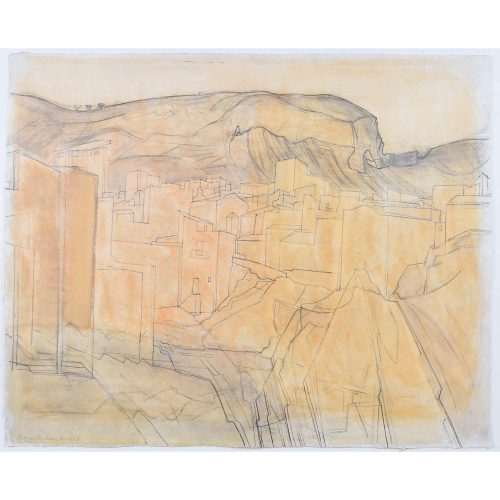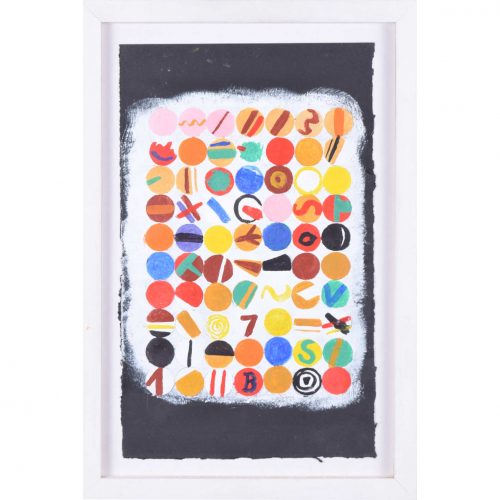-
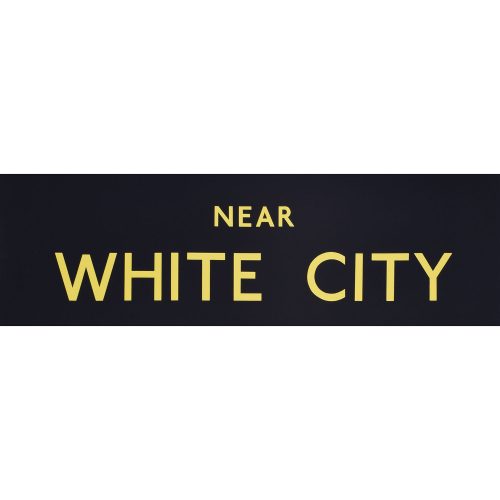
White City Routemaster Slipboard Poster c1970
Screenprint poster 64x19cm Printed for London Transport for use on Routemaster or RT busses. If you are interested email info@manningfineart.co.uk or call us on 07929 749056. Condition: Good, small professionally repaired tear on right hand margin. -
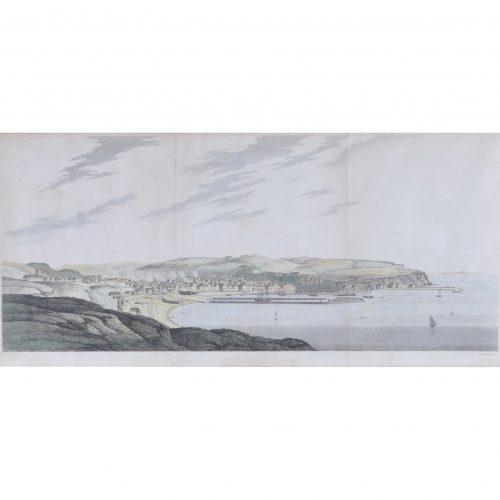
Elizabeth Byrne (1777 - 1849) after Joseph Farington RA (1747 - 1821)
North View of Whitehaven, Cumbria
Hand-coloured engraving 27.5 x 56.5 cm A view of the cliffs and port of Whitehaven in Cumbria. Joseph Farington RA was an 18th-century English landscape painter and diarist. He drew a north and south view of Whitehaven, which were engraved by Elizabeth Byrne in the early 19th century. Byrne was a London-born etcher and landscape painter, who was taught by her father, the etcher William Byrne. She and her father contributed etchings to the 'Magna Britannia' and 'Britannia depicta', books illustrating the most interesting views in various English counties, published by Samuel Lysons in the late 1810s. Condition: good. Two folds and some light age toning. If you are interested, please email info@manningfineart.co.uk or call us on 07929 749056. -
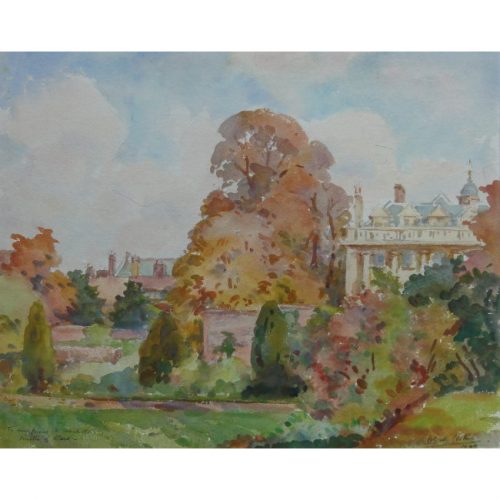
Wilfred Gabriel de Glehn RA (1870-1951)
Clare College from the Backs
Watercolour Inscribed “To my friend H Thirkill Master of Clare” Signed “W de Glehn, 1940” 40x50cm De Glehn painted Henry Thirkill in a portrait that is in the collection of Clare College and may be viewed here. Thirkill was Master between 1939 and 1958 and the portrait was commissioned in 1947. A versatile painter, skilled at portraiture, landscapes and figures de Glehn is regarded as one of England’s premier Impressionist painters. His ability to portray lighting in a lively fashion and his vibrant use of colour combine to provide wonderfully rich paintings. If you are interested email info@manningfineart.co.uk or call us on 07929 749056. -
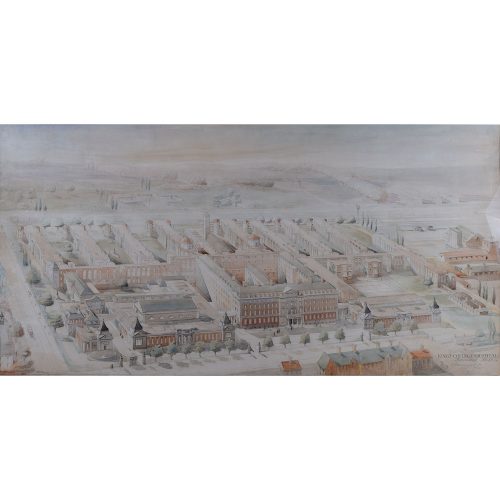
William Alfred Pite (1860-1949)
King`s College Hospital, Denmark Hill general bird`s-eye view (1913)
Initialled H.M.F., signed and titled by William A. Pite F.R.I.B.A. (1860-1949), lower right, on board support with R.I.B.A. `Exhibition of Contemporary British Architecture` label, and architect`s label both mounted on verso Watercolour over pencil 46 x 92cm (26.25 x 18 inches) -
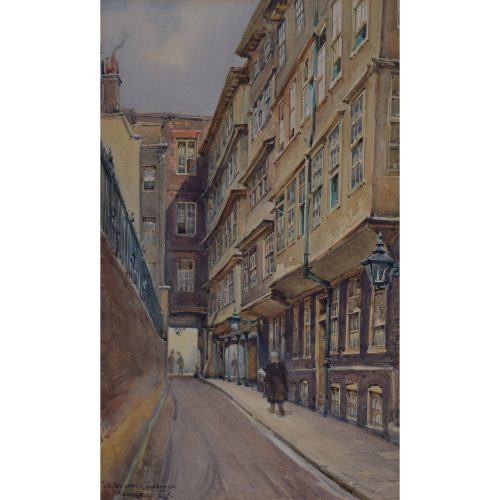
William Alistair MacDonald (1861-1948)
Middle Temple Lane, London
Signed Watercolour 26x17cm The buildings of Middle Temple Lane were constructed between 1684 and 1780. MacDonald is best known for his scenes of London landmarks. If you are interested email info@manningfineart.co.uk or call us on 07929 749056. -
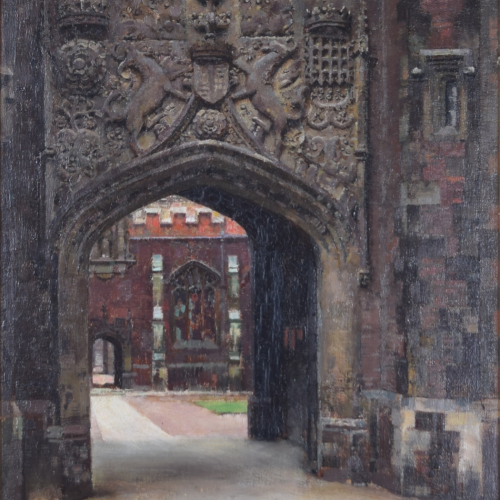
William Logsdail (1859-1944)
St John's College Cambridge, Great Gate
Oil on board 39 x 28 cm Signed lower right. In an original 19th century gilt composition frame. Provenance: the private collection of the late Christopher Wood, a renowned dealer in Victorian art who was a member of St John’s. If you are interested, please email info@manningfineart.co.uk or call us on 07929 749056. -
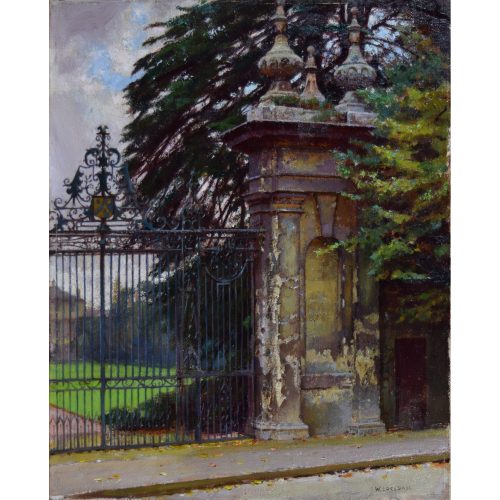
William Logsdail (1859-1944)
Trinity College Gateway, Oxford
Oil on canvas Signed W Logsdail (lower right) 37 x 29.5 cm (14.5 x 11.5 in) Biographical details and other works by Logsdail may be found by clicking here. If you are interested email info@manningfineart.co.uk or call us on 07929 749056. Logsdail's skill at painting old stonework is particularly clear here, the crumbling stonework of the gateway has been created through the blending of a large spectrum of colours, creating a very realistic effect. -
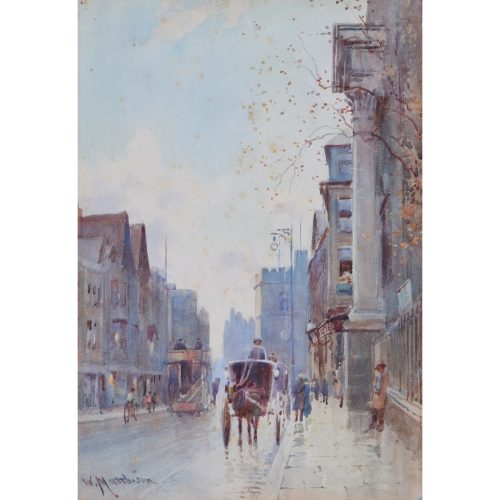
William Matthison (1853-1926)
All Saints Church and Carfax in the Evening, Oxford
Watercolour 25 x 17 cm Matthison was born near Birmingham and attended King Edward's School in the city. He learned drawing at the Birmingham Central School of Art and then became a pupil of Birmingham artist Edward Watson. He became a professional artist in 1875 and moved to Oxfordshire a few years after; this was where he had the opportunity to produce many of the Oxford views for which he is known today. In 1902 he moved to Park Town in Oxford and was commissioned by Robert Peel to paint more than seventy views of the University of Oxford, which were subsequently made into postcards. Priced at seven for a shilling, they were only available from E Cross of Pembroke Street (a long-since closed business). Raphael Tuck & Sons also commissioned him to produce postcard scenes of Cambridge. Matthison's views of Oxford were later printed in Fifty Watercolour Drawings of Oxford, published in 1912 by Alden & Co. Click here for other works by the artist. If you are interested, please email info@manningfineart.co.uk or call us on 07929 749056. -
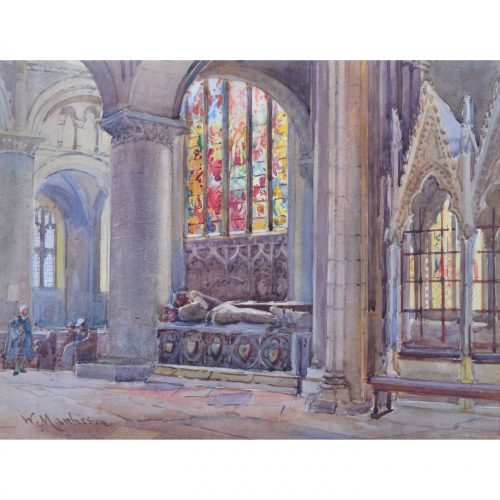
William Matthison
Christ Church Cathedral, Oxford
Watercolour 26 x 34 cm Matthison was born near Birmingham and attended King Edward’s School in the city. He learned drawing at the Birmingham Central School of Art and then became a pupil of Birmingham artist Edward Watson. He became a professional artist in 1875 and moved to Oxfordshire a few years after; this was where he had the opportunity to produce many of the Oxford views for which he is known today. In 1902 he moved to Park Town in Oxford and was commissioned by Robert Peel to paint more than seventy views of the University of Oxford, which were subsequently made into postcards. Priced at seven for a shilling, they were only available from E Cross of Pembroke Street (a long-since closed business). Raphael Tuck & Sons also commissioned him to produce postcard scenes of Cambridge. Matthison’s views of Oxford were later printed in Fifty Watercolour Drawings of Oxford, published in 1912 by Alden & Co. Click here for other works by the artist. If you are interested, please email info@manningfineart.co.uk or call us on 07929 749056. -
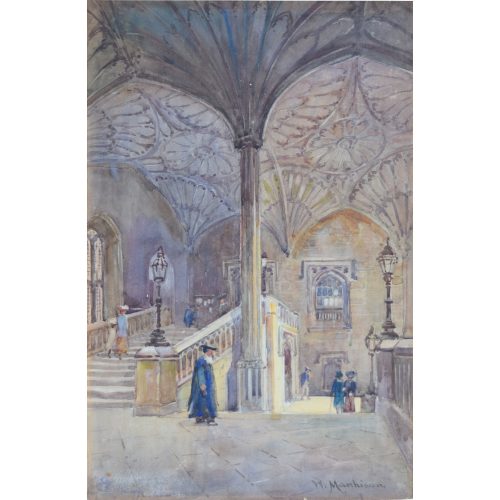
William Matthison (1853-1926)
Christ Church Oxford Staircase
Watercolour 38 x 25 cm Matthison was born near Birmingham and attended King Edward’s School in the city. He learned drawing at the Birmingham Central School of Art and then became a pupil of Birmingham artist Edward Watson. He became a professional artist in 1875 and moved to Oxfordshire a few years after; this was where he had the opportunity to produce many of the Oxford views for which he is known today. In 1902 he moved to Park Town in Oxford and was commissioned by Robert Peel to paint more than seventy views of the University of Oxford, which were subsequently made into postcards. Priced at seven for a shilling, they were only available from E Cross of Pembroke Street (a long-since closed business). Raphael Tuck & Sons also commissioned him to produce postcard scenes of Cambridge. Matthison’s views of Oxford were later printed in Fifty Watercolour Drawings of Oxford, published in 1912 by Alden & Co. Click here for other works by the artist. If you are interested, please email info@manningfineart.co.uk or call us on 07929 749056. -
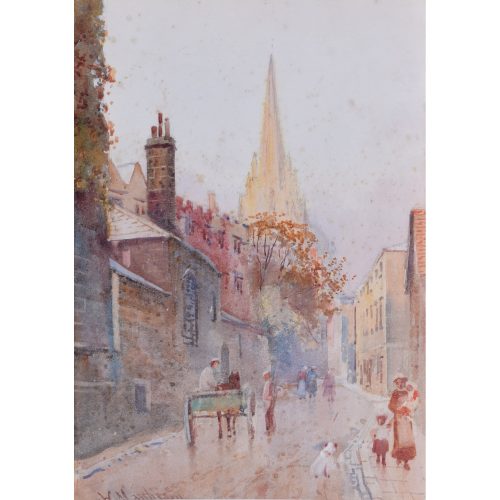
William Matthison (1853-1926)
Oriel Street, Oxford and St. Mary's Church
Watercolour 26 x 17 cm Matthison was born near Birmingham and attended King Edward’s School in the city. He learned drawing at the Birmingham Central School of Art and then became a pupil of Birmingham artist Edward Watson. He became a professional artist in 1875 and moved to Oxfordshire a few years after; this was where he had the opportunity to produce many of the Oxford views for which he is known today. In 1902 he moved to Park Town in Oxford and was commissioned by Robert Peel to paint more than seventy views of the University of Oxford, which were subsequently made into postcards. Priced at seven for a shilling, they were only available from E Cross of Pembroke Street (a long-since closed business). Raphael Tuck & Sons also commissioned him to produce postcard scenes of Cambridge. Matthison’s views of Oxford were later printed in Fifty Watercolour Drawings of Oxford, published in 1912 by Alden & Co. Click here for other works by the artist. If you are interested, please email info@manningfineart.co.uk or call us on 07929 749056. -
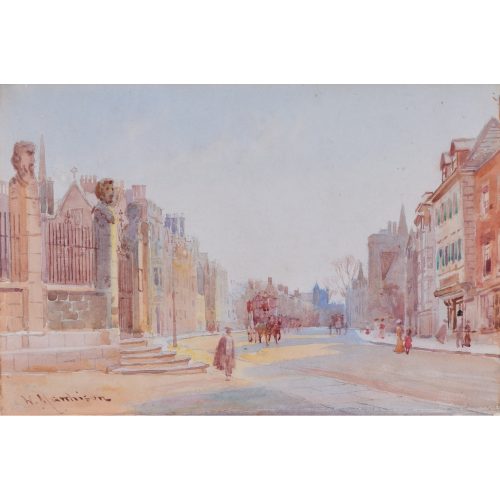
William Matthison (1853-1926)
The Sheldonian Theatre, Oxford
Watercolour 18 x 28 cm Matthison was born near Birmingham and attended King Edward's School in the city. He learned drawing at the Birmingham Central School of Art and then became a pupil of Birmingham artist Edward Watson. He became a professional artist in 1875 and moved to Oxfordshire a few years after; this was where he had the opportunity to produce many of the Oxford views for which he is known today. In 1902 he moved to Park Town in Oxford and was commissioned by Robert Peel to paint more than seventy views of the University of Oxford, which were subsequently made into postcards. Priced at seven for a shilling, they were only available from E Cross of Pembroke Street (a long-since closed business). Raphael Tuck & Sons also commissioned him to produce postcard scenes of Cambridge. Matthison's views of Oxford were later printed in Fifty Watercolour Drawings of Oxford, published in 1912 by Alden & Co. Click here for other works by the artist. If you are interested email info@manningfineart.co.uk or call us on 07929 749056. -
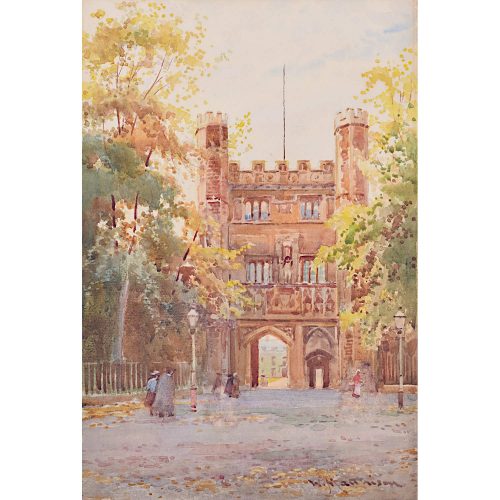
William Matthison (1853-1926)
Trinity College Cambridge Great Gate
Watercolour 36.5 x 26 cm Matthison was born near Birmingham and attended King Edward’s School in the city. He learned drawing at the Birmingham Central School of Art and then became a pupil of Birmingham artist Edward Watson. He became a professional artist in 1875 and moved to Oxfordshire a few years after; this was where he had the opportunity to produce many of the Oxford views for which he is known today. In 1902 he moved to Park Town in Oxford and was commissioned by Robert Peel to paint more than seventy views of the University of Oxford, which were subsequently made into postcards. Priced at seven for a shilling, they were only available from E Cross of Pembroke Street (a long-since closed business). Raphael Tuck & Sons also commissioned him to produce postcard scenes of Cambridge. Matthison’s views of Oxford were later printed in Fifty Watercolour Drawings of Oxford, published in 1912 by Alden & Co. Click here for other works by the artist. If you are interested, please email info@manningfineart.co.uk or call us on 07929 749056. -
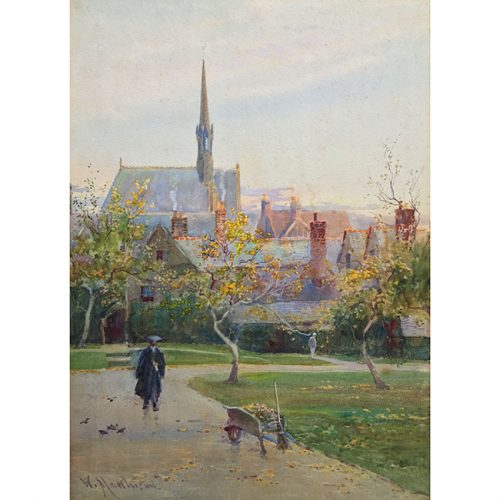
William Matthison (1853-1926)
Trinity Front Quad with Exeter College Chapel, Oxford
Watercolour 36.5 x 26cm Matthison was born near Birmingham and attended King Edward’s School in the city. He learned drawing at the Birmingham Central School of Art and then became a pupil of Birmingham artist Edward Watson. He became a professional artist in 1875 and moved to Oxfordshire a few years after; this was where he had the opportunity to produce many of the Oxford views for which he is known today. In 1902 he moved to Park Town in Oxford and was commissioned by Robert Peel to paint more than seventy views of the University of Oxford, which were subsequently made into postcards. Priced at seven for a shilling, they were only available from E Cross of Pembroke Street (a long-since closed business). Raphael Tuck & Sons also commissioned him to produce postcard scenes of Cambridge. Matthison’s views of Oxford were later printed in Fifty Watercolour Drawings of Oxford, published in 1912 by Alden & Co. Click here for other works by the artist. If you are interested, please email info@manningfineart.co.uk or call us on 07929 749056. -
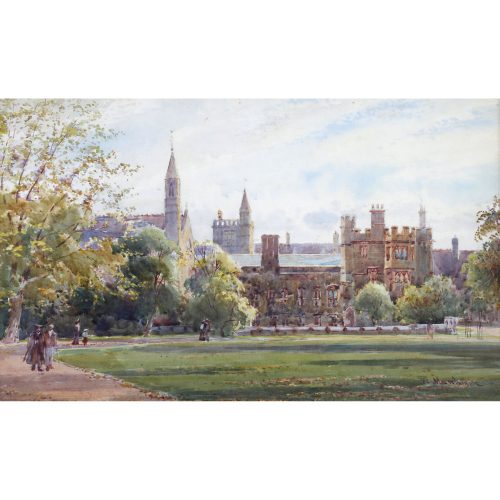
William Matthison
Balliol College Oxford
Watercolour 26 x 44 cm Signed lower right 'W Matthison'. Matthison was born near Birmingham and attended King Edward’s School in the city. He learned drawing at the Birmingham Central School of Art and then became a pupil of Birmingham artist Edward Watson. He became a professional artist in 1875 and moved to Oxfordshire a few years after; this was where he had the opportunity to produce many of the Oxford views for which he is known today. In 1902 he moved to Park Town in Oxford and was commissioned by Robert Peel to paint more than seventy views of the University of Oxford, which were subsequently made into postcards. Priced at seven for a shilling, they were only available from E Cross of Pembroke Street (a long-since closed business). Raphael Tuck & Sons also commissioned him to produce postcard scenes of Cambridge. Matthison’s views of Oxford were later printed in Fifty Watercolour Drawings of Oxford, published in 1912 by Alden & Co. Click here for other works by the artist. If you are interested, please email info@manningfineart.co.uk or call us on 07929 749056. -
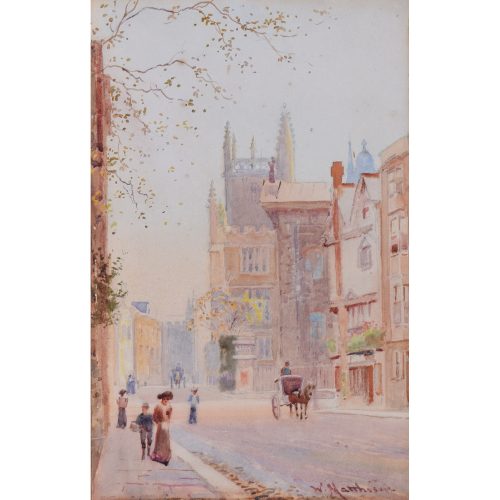
William Matthison (1853-1926)
Exeter and Balliol from the Sheldonian Theatre, Oxford
Watercolour 26 x 17 cm Matthison was born near Birmingham and attended King Edward’s School in the city. He learned drawing at the Birmingham Central School of Art and then became a pupil of Birmingham artist Edward Watson. He became a professional artist in 1875 and moved to Oxfordshire a few years after; this was where he had the opportunity to produce many of the Oxford views for which he is known today. In 1902 he moved to Park Town in Oxford and was commissioned by Robert Peel to paint more than seventy views of the University of Oxford, which were subsequently made into postcards. Priced at seven for a shilling, they were only available from E Cross of Pembroke Street (a long-since closed business). Raphael Tuck & Sons also commissioned him to produce postcard scenes of Cambridge. Matthison’s views of Oxford were later printed in Fifty Watercolour Drawings of Oxford, published in 1912 by Alden & Co. Click here for other works by the artist. If you are interested, please email info@manningfineart.co.uk or call us on 07929 749056. -
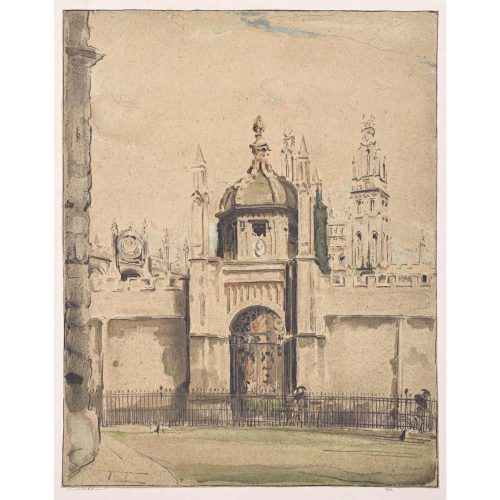
William Nicholson (1872-1949) All Souls College, Oxford
Signed, and numbered 98, published by Stafford Gallery with blindstamp Lithograph 35x28cm Click here for biography and other works by this artist. If you are interested email info@manningfineart.co.uk or call us on 07929 749056. Condition: Generally very good condition. -
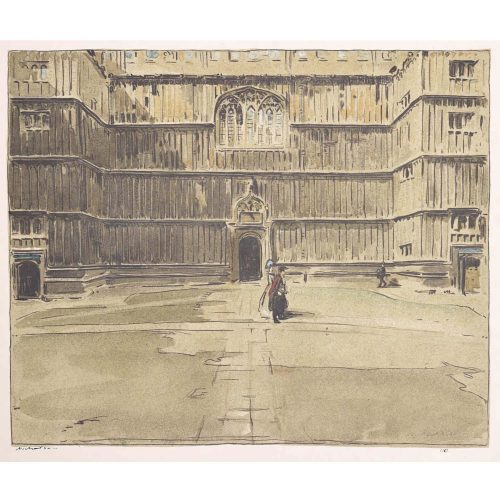
William Nicholson (1872-1949) Bodleian Library, University of Oxford
Signed and numbered 110, published by Stafford Gallery with blind stamp Lithograph 28 x 34.5cm Click here for biography and other works by this artist. If you are interested email info@manningfineart.co.uk or call us on 07929 749056. Condition: Generally very good condition. -

William Nicholson (1872-1949) Christ Church Library, Oxford
Signed and numbered 34, published by Stafford Gallery with blind stamp Lithograph 26 x 34.5cm Click here for biography and other works by this artist. If you are interested email info@manningfineart.co.uk or call us on 07929 749056. Condition: Generally very good condition. -

William Nicholson (1872-1949)
Christ Church, Oxford (1906)
Lithograph, with Stafford Gallery blindstamp 35.5x27cm Click here for biography and other works by this artist. If you are interested email info@manningfineart.co.uk or call us on 07929 749056. -
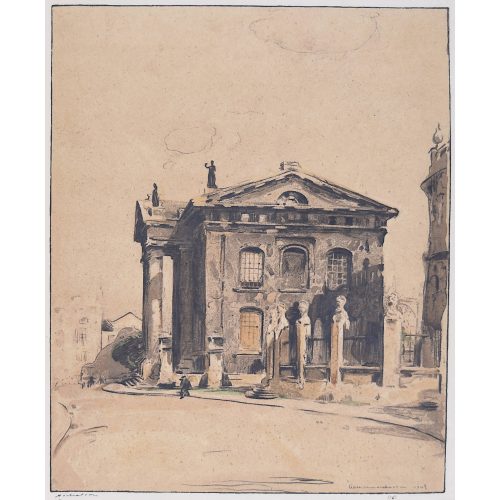
William Nicholson (1872-1949)
Clarendon Building Oxford (1906)
Lithograph, signed lower left, with Stafford Gallery blindstamp 32 x 26cm Click here for biography and other works by this artist. If you are interested email info@manningfineart.co.uk or call us on 07929 749056. -
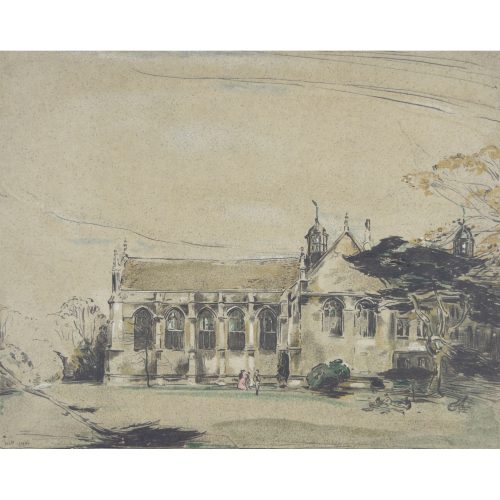
William Nicholson (1872-1949)
Garden Front with Chapel, Wadham College, Oxford (1906)
Lithograph, signed lower left, with Stafford Gallery blindstamp 29.5 x 33 cm (11.5 x 13 in.) Click here for biography and other works by this artist. If you are interested email info@manningfineart.co.uk or call us on 07929 749056. -
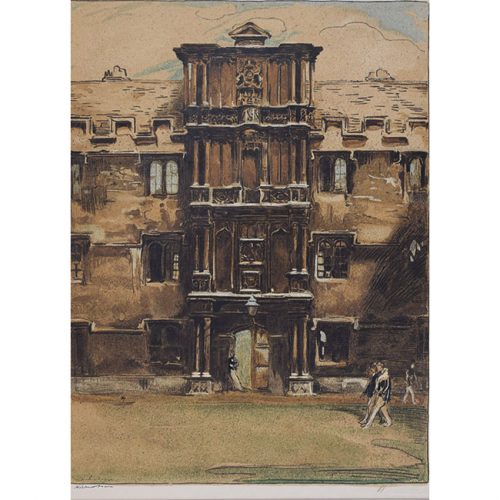
William Nicholson (1872-1949)
Merton College, Oxford (1906)
Lithograph, signed lower left, with Stafford Gallery blindstamp 33.5 x 24.5cm Click here for biography and other works by this artist. If you are interested email info@manningfineart.co.uk or call us on 07929 749056. -
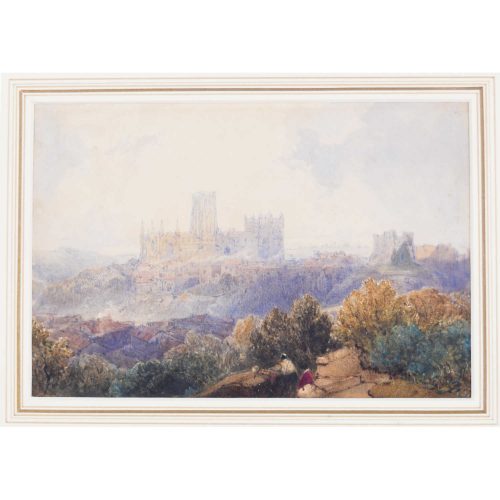
William Roxby Beverley (1811-1889, British)
Durham Cathedral From the North East (c.1860)
16 cm x 24 cm Watercolour Provenance: Sotheby's lot 25, 25th January 1989. William Roxby Beverley was an English theatrical scene painter, known also as an artist in oils and watercolours. William John Lawrence, writing in the Dictionary of National Biography, considered him second only to Clarkson Stanfield among British scene painters of the nineteenth century. Condition: Slight loss of colour in sky area and very light foxing in same, otherwise generally very good. -
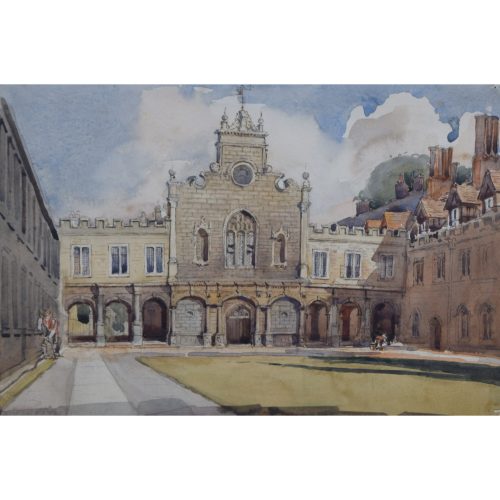
William Thomas Martin Hawksworth (1853-1935)
Peterhouse Cambridge
Watercolour, framed. 17.5 x 26cm. Provenance: with Thomas Agnew & Sons, London A Londoner, Hawksworth was a member of both the RI and RBA. The V&A and British Museum both hold examples of his watercolours. If you are interested email info@manningfineart.co.uk or call us on 07929 749056. -
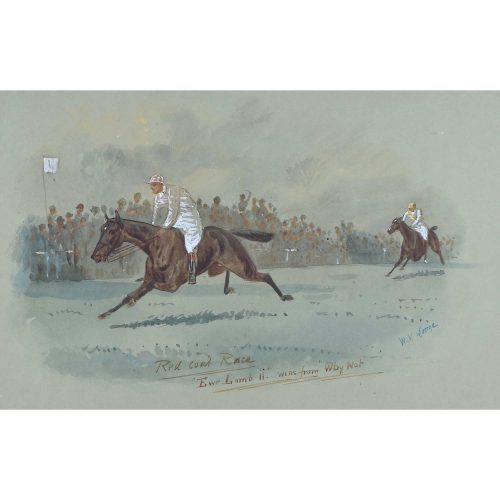
William Verner Longe (1857-1924)
Cottenham, December 1904
Watercolour 29 x 45 cm Signed and inscribed 'Red Coat Race, "Ewe Lamb ii" wins from "Why Not"'. A lively racing scene by William Verner Longe, and English artist noted for his scenes of racing, hunting, and other equestrian activities. He was educated at the Ipswich School of Arts and then the Royal Academy of Fine Arts in Antwerp. Condition: generally very good; original frame with antique glass. Some discolouration to margins. -
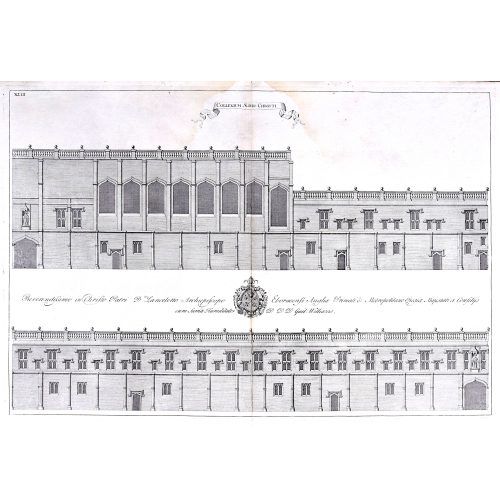
William Williams (Welsh, fl. 1724-1733) Christ Church, Oxford
Engraving c. 1732 for Oxonia Depicta (pub. London 1732-33) 41x60cm If you are interested email info@manningfineart.co.uk or call us on 07929 749056. Condition: Fair, gentle staining towards top and usual handling marks to margins, as illustrated. -
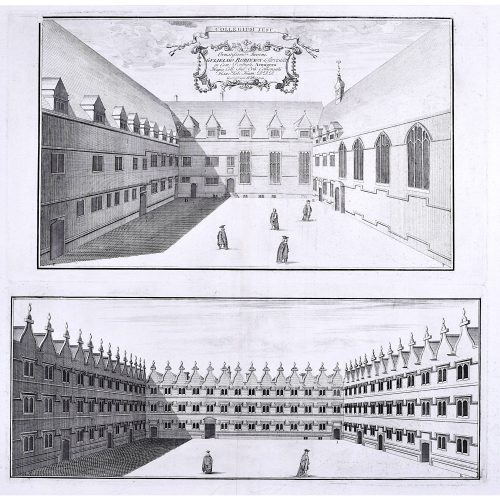
William Williams (Welsh, fl. 1724-1733) Jesus College, Oxford
Engraving c. 1732 for Oxonia Depicta (pub. London 1732-33) 43x44cm If you are interested email info@manningfineart.co.uk or call us on 07929 749056. Condition: Fair, gentle staining towards top and usual handling marks to margins, as illustrated. -
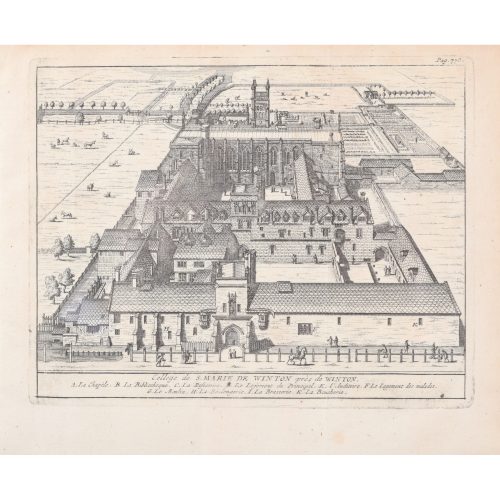
Pieter van der Aa (1659-1733), after David Loggan (1634–1692)
Winchester College, or "Le College de St Marie de Winton" (1727)
Engraving 12 x 16 cm An eighteenth-century view of Winchester College, engraved by Pieter van der Aa after David Loggan, the noted engraver, draughtsman, and painter. Pieter van der Aa of Leiden was a Dutch publisher best known for preparing maps and atlases, though he also printed editions of foreign bestsellers and illustrated volumes. He is noted for the many engravings he produced after David Loggan's series of Oxford and Cambridge colleges and costumes. In 1727 Van Der Aa illustrated "Les Delices de la Grande Bretagne & de L'Irelande" by James Beeverell, the book in which this engraving appears. Condition: a good impression. If you’d like to know more, please email info@manningfineart.co.uk or call us on 07929 749056.


